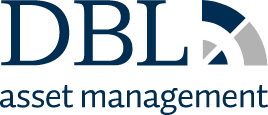The end of the tax year on April 5th is fast approaching, so now is the time to make sure you have made appropriate preparations to make the most of your tax allowances.
We discussed some options, such as looking at your inheritance and capital gains tax liabilities, topping up your pension contributions and boosting your children’s savings, in our last article.
But these are just some of the tax allowances that you should consider before the deadline date. Here are some other options worth looking at.
The Marriage Allowance
You could save up to £250 in tax payments if you transfer £1,250 of your Personal Allowance to your spouse or civil partner, as long as they earn a higher salary than you and pay tax at the basic rate.
You must ensure your income falls within your Personal Allowance of £12,500 and apply to HMRC to take up this option. Any claim can be backdated to include any tax year since April 5th 2017.
The Tapered Annual Allowance
The tapered annual allowance applies to people with both a threshold income of more than £200,000 and an adjusted income of over £240,000. For every £2 your adjusted income goes above this amount, including employer pension contributions, your annual allowance is reduced by £1.
The minimum reduced annual allowance for the current tax year is £4,000. The Government has a detailed guide for working out if your income will have the allowance applied. You may only be able to determine this accurately as April 5th draws closer.
If you assess the figures correctly in time to make a pension contribution, then do so. If not, as soon as the most accurate figures become available, you can make up any shortfall by carrying it forward to the next year.
Enterprise Investment Scheme, SEIS and VCT
Investments made with the Enterprise Investment Scheme (EIS) or Seed Enterprise Investment Scheme (SEIS) during the current tax year are eligible for carry-back relief for the 2020 to 2021 tax year.
This can potentially provide both income tax relief and capital gains tax deferral relief. However, both have different rules, so you should check with each provider first.
For the EIS, you could get thirty per cent income tax relief on the amount allocated for shares in EIS qualifying companies, from a minimum of £500 up to a maximum of £2,000,000. For Venture Capital Trusts (VCT), you receive thirty per cent of tax relief on investments up to £200,000. For SEIS qualifying companies, you can receive 50% income tax relief of up to £100,000 per year.
The Money Purchase Annual Allowance
You receive tax relief on pension contributions of up to £40,000 per year or 100% of your taxable salary. If you have already started drawing income from a defined contribution pension scheme, the amount you can pay into a pension scheme without being taxed, reduces.
The allowance currently stands at £4,000 and applies if you have taken any taxed income from a money purchase or defined contribution pension. This includes personal pensions, SIPPs and workplace pensions. If you have any questions about this, get in touch with us and we will answer them for you.
Expenses
Employees may be able to claim for expenses such as travel mileage if they are not covered by your employer. This does not include the cost of purchasing essential equipment or items to do your job, such as professional subscriptions or tools.
If your employer reimburses your travel mileage costs at a rate lower than the current standard mileage rate of forty-five pence per mile for the first ten thousand miles and twenty-five pence per mile afterwards, you can claim the difference back in your tax return.
Taking steps to maximise your tax allowances in the run-up to the end of the tax year could make a big difference before the tax year ends on April 5th.
If you need any help with your tax planning or have any questions about making the most of your tax allowances, please get in touch with us.
